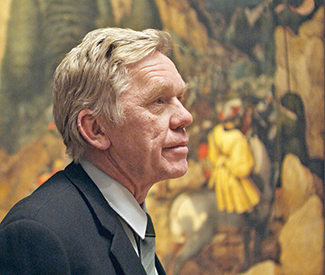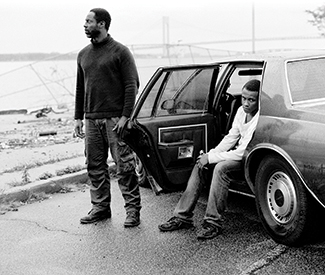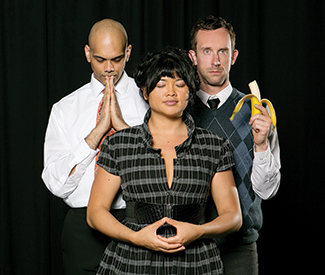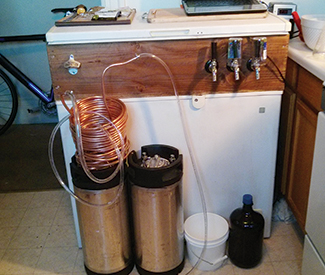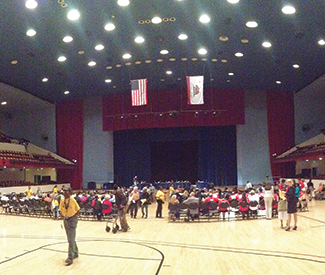arts@sfbg.com
MUSIC There was no reason for me to be awake at 7:31am, since I’d flown into Mexico City the day before. Losing two hours of sleep from the time change left me dazed. Exactly 10 minutes later my hotel room started to shake. I sat up, alarmed, and assessed the commotion I heard in the hallway before I realized I was experiencing a 6.2 earthquake from the fifth floor. I clicked on the TV and saw structured evacuations of buildings that could have easily been near me. I wondered if I should be doing the same, but the shaking stopped. It was like my welcoming jolt — “Get ready, you’re with us now. You do what we do.”
I’d trekked to this monster of a city before, but only spent three days last time. I loved it on a touristy level and knew I wanted more, so I planned a return this summer. Coincidentally, SF’s Alcoholocaust Presents (which books punk shows) had Los Headaches and Los Vincent Black Shadows slated for some Bay Area appearances shortly before my trip, as part of both Mexico City bands’ West Coast summer tour. Intrigued, I spent two consecutive nights at the Hemlock Tavern checking out the bands, which were bouncing off the walls with energy (even when the musicians weren’t playing). Bob Log III and the Okmoniks headlined to a hot and crowded club the second night.
I bought Los Headaches’ CD, Never Ending Hunger, the night before from Twist!, the bassist [Ed. note: All last names are omitted to protect the band members from immigration]. At the time I didn’t realize he’s really not a member of the band (I figured they had interchangeable members since he is in Los Vincent Black Shadows) and that US Immigration, some weed in a guitar case, and those pesky work visas had marred the tour plans of two Headaches; granting them deportations and a five-year ban on US entry. Alcoholocaust would put me in touch with Twist! He’d be my point of contact for a week of strangers showing me kindness, sharing music, and letting me in on parts of the city I may have not otherwise seen.
“IT’S LIKE JEEEZ“
“Ever had Mezcal?” Twist! asked. I’d been off the sauce for nine months, but before I arrived an itinerary email suggested plans to infiltrate an invite-only VICE party (where the Growlers played), record shopping (my request), seeing some venues where local bands play or a house show (ultimately my goal), and the problematic hint of grabbing some beers.
We ate a salmon and caper pizza and I was introduced to chimichurri at a restaurant in the trendy Condesa neighborhood. His wife and 5-month-old joined, along with Carlos (one of the deported Headaches). Everyone but me had a beer. “Yes,” I answered. “What about pulque?” he retorted. The concoction of fermented agave sap evaded me on my previous trip. In the spirit of trying new things and rather than be a slave to any rules about substance (yet cautious not to be enslaved by the bottle), I decided the next day to alleviate my anxiety and imbibed.
“It’s like Jeeez” Fosi said, joking about the drink’s suspect consistency in a thick accent. (They told me they don’t normally speak English, but since my Spanish is limited they made an exception). He’s the other deported Headache, a guitarist who faced tough questioning and an invasive search from immigration officers who threatened him with up to 20 years in jail if he didn’t adequately cooperate. One mango, one pistachio: down the hatch. Both were delicious and I had no regrets, body buzz and all.
Hell bent on finding an in to the VICE party, a barrage of texts and phone calls flew across the table. Pepe (Twist!’s brother and Los Headaches’ drummer) met us at the bar. I envisioned the lost home video mentioned of the two brothers taking turns throwing themselves into a drum set, honing their Nirvana impersonations as kids.
Their conversations lapsed into Spanish as another stressful development arose when a band showcase they organized at the last minute for Friday night was suddenly jeopardized by greed (the person who was going to lend the art space was now asking $300. It wasn’t clear to me if that meant pesos or US dollars). For a moment my stomach sank and I thought there might be a shakedown, but a house was secured. They’d throw a party, free of charge.
Despite the free hors d’oeuvres and Dos Equis we stumbled upon at a Volcom party for a new shoe line, it probably paled compared to any exclusive party. I passed on the Growlers (a few of the band members snuck in) since Friday’s showcase would be the main event.
“THIS IS ALL FOR YOU, MAN”
Nico called my name to join him for a walk to the liquor store. Bleached-blond with shades, there’s no way he’s not in a band. He plays guitar and sings (they all sing) and was the final Headache I met in Mexico City. He described the common response from girls when they ask what he does and he tells them he plays rock’n’roll: they’re not interested. I said freelance music writing doesn’t pay well either. “We are losers,” he joked.
They don’t often get paid to play, but the determination to simply do what they love with their lives seemed to be the core of their existence. The showcase came together in a series of sweaty, passionate, punk-rock performances. Grandma Boys, Suca Suca, and Los Reverse demonstrated spirited, supportive roles for the aforementioned bands.
“This is for you. This is all for you, man,” Twist! said, almost staring through me with intensity. Party mode had climaxed, but the profundity of what transpired didn’t sink in until later. The day before I left, Fosi asked, “Did you get what you came for?” I told him “And then some.” Humbled, lucid, and feeling alive, I left fulfilled. My reward is that I remember everything.


